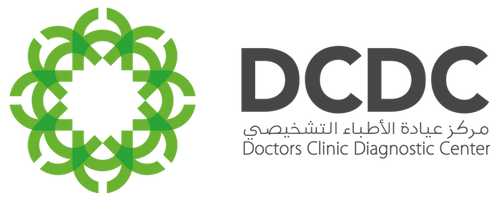Introduction
Sleep is a fundamental component of a child’s health and well-being. It is during sleep that children’s bodies and brains grow, recover, and consolidate memories. Despite its importance, sleep disorders are common among children and can significantly impact their physical, cognitive, and emotional development. This article delves into the various sleep disorders that affect children, their causes, symptoms, consequences, and the strategies for managing and treating them.
Chapter 1: The Importance of Sleep in Childhood Development
– 1.1 The Role of Sleep in Growth and Development
– Discuss the biological and neurological functions of sleep in children.
– Explain how sleep contributes to cognitive development, memory consolidation, and learning.
– Explore the role of sleep in emotional regulation and physical health.
– 1.2 Recommended Sleep Duration for Different Age Groups
– Provide guidelines for the recommended sleep duration for infants, toddlers, preschoolers, school-aged children, and adolescents.
– Discuss variations in sleep needs based on individual differences.
Chapter 2: Common Sleep Disorders in Children
– 2.1 Insomnia in Children
– Define insomnia and its prevalence in children.
– Identify potential causes including anxiety, stress, and environmental factors.
– Discuss the impact of insomnia on a child’s daily life.
– 2.2 Sleep Apnea in Children
– Explain the nature of sleep apnea, focusing on obstructive sleep apnea (OSA).
– Discuss risk factors such as obesity, enlarged tonsils, and craniofacial abnormalities.
– Highlight symptoms and the importance of early diagnosis and treatment.
– 2.3 Parasomnias: Night Terrors, Sleepwalking, and Sleep Talking
– Define parasomnias and differentiate between the various types.
– Explore the common causes and triggers of parasomnias in children.
– Discuss the impact of parasomnias on the child and family.
– 2.4 Restless Legs Syndrome (RLS) in Children
– Explain what RLS is and its prevalence in children.
– Discuss the possible genetic and neurological causes.
– Explore the effects of RLS on sleep quality and overall well-being.
– 2.5 Circadian Rhythm Sleep Disorders
– Define circadian rhythm disorders and their manifestation in children.
– Discuss common types, such as delayed sleep phase syndrome and non-24-hour sleep-wake rhythm disorder.
– Explore potential causes, including biological, environmental, and behavioural factors.
Chapter 3: Causes and Risk Factors of Sleep Disorders in Children
– 3.1 Biological and Genetic Factors
– Discuss how genetics can predispose children to certain sleep disorders.
– Explore the role of brain development and neurotransmitter function in sleep regulation.
– 3.2 Environmental and Behavioral Factors
– Identify environmental factors such as screen time, noise, and sleep environment.
– Discuss behavioural factors including bedtime routines, sleep hygiene, and stress.
– 3.3 Psychological and Emotional Factors
– Explore the impact of anxiety, depression, and trauma on sleep.
– Discuss the relationship between ADHD, autism spectrum disorder, and sleep disorders.
Chapter 4: Diagnosis and Evaluation of Sleep Disorders in Children
– 4.1 Recognizing Symptoms and When to Seek Help
– Provide a comprehensive list of symptoms associated with common sleep disorders.
– Discuss when parents and caregivers should seek professional help.
– 4.2 Diagnostic Tools and Procedures
– Explain common diagnostic tools such as polysomnography, actigraphy, and sleep diaries.
– Discuss the role of sleep specialists and interdisciplinary approaches to diagnosis.
Chapter 5: Treatment and Management of Sleep Disorders in Children
– 5.1 Behavioral Interventions and Sleep Hygiene
– Discuss the importance of establishing a consistent sleep routine and environment.
– Explore cognitive-behavioural therapy (CBT) techniques tailored for children.
– 5.2 Medical Treatments and Interventions
– Provide an overview of medications commonly used to treat sleep disorders in children.
– Discuss the role of medical interventions such as CPAP therapy for sleep apnea.
– 5.3 Alternative and Complementary Therapies
– Explore the use of melatonin, herbal supplements, and other alternative treatments.
– Discuss the evidence supporting the use of these therapies in children.
Chapter 6: The Impact of Sleep Disorders on Family and Academic Life
– 6.1 Effects on Family Dynamics
– Discuss how a child’s sleep disorder can affect family routines, stress levels, and overall well-being.
– Explore strategies for families to manage and cope with the challenges.
– 6.2 Impact on Academic Performance and Social Life
– Discuss the link between sleep disorders and cognitive functioning, attention, and behaviour in school.
– Explore how sleep disorders can affect a child’s social interactions and extracurricular activities.
Chapter 7: Preventive Measures and Promoting Healthy Sleep in Children
– 7.1 Establishing Good Sleep Hygiene from an Early Age
– Provide guidelines for parents on how to establish and maintain healthy sleep habits.
– Discuss the role of diet, exercise, and technology in sleep health.
– 7.2 Educating Parents, Teachers, and Healthcare Providers
– Discuss the importance of awareness and education in preventing and managing sleep disorders.
– Explore the role of schools and healthcare providers in supporting healthy sleep habits.
Conclusion
In conclusion, sleep is crucial to a child’s physical, cognitive, and emotional development. Sleep disorders, if left unaddressed, can have profound and lasting effects. Through early recognition, proper diagnosis, and a combination of behavioural, medical, and supportive interventions, sleep disorders in children can be effectively managed. Education and support for parents and caregivers are essential in ensuring children achieve the restorative sleep they need for healthy development.
Visit Website For More Details: https://doctorsclinicdubai.ae/





